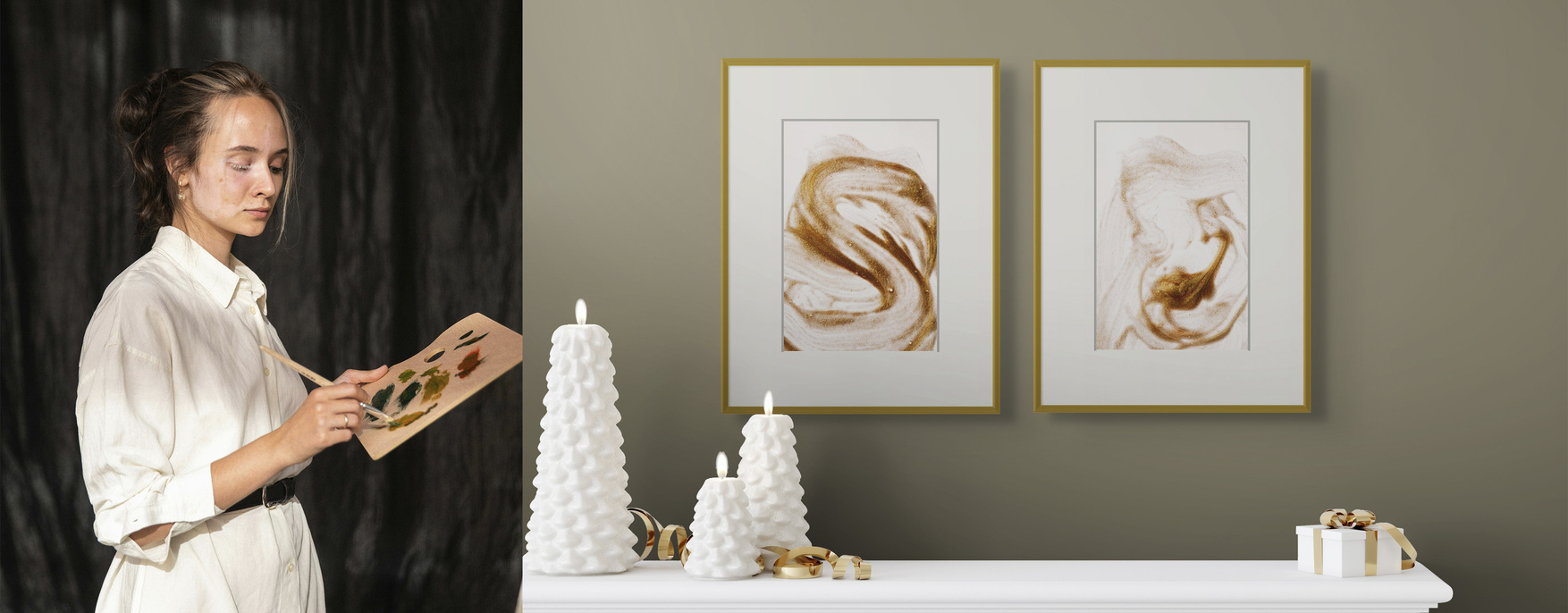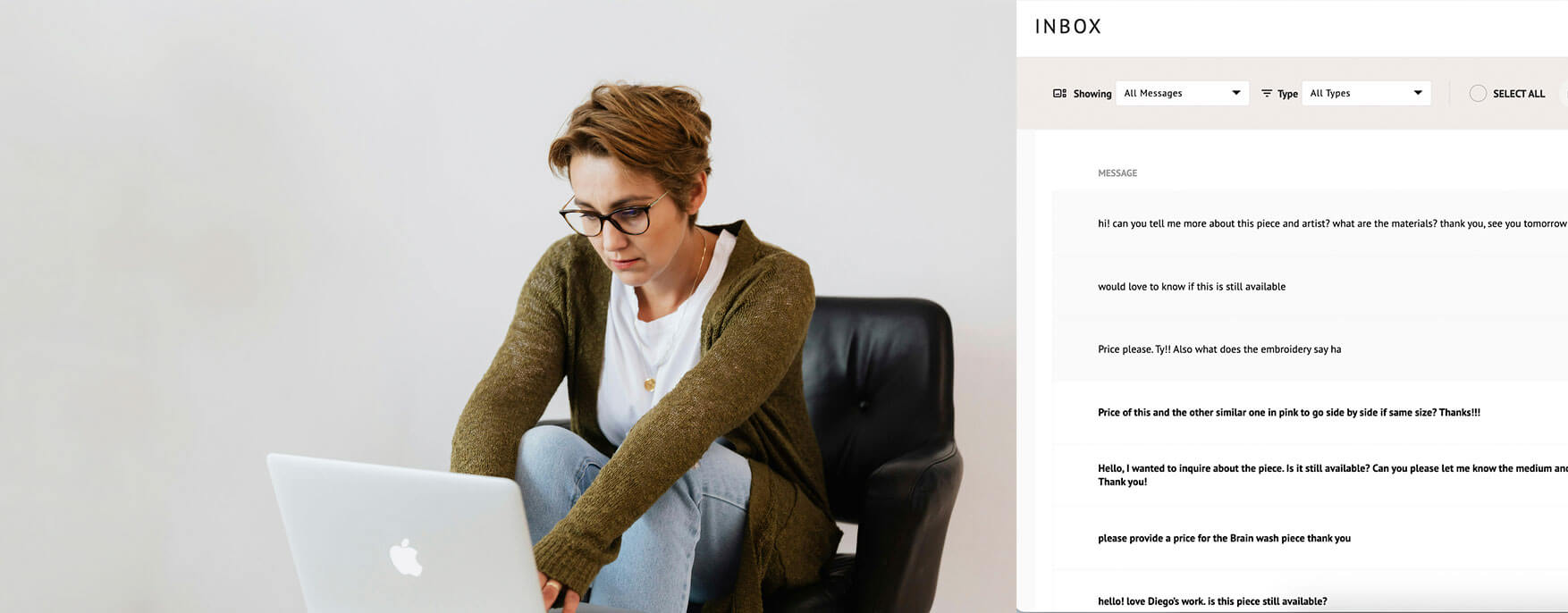Do you want to make a career-changing move? Art commissions can be a way for artists to open a new stream of income while strengthening their bond with art buyers. Commissions might involve creating customized pieces for collectors, a business, or a public space. In all cases, they are a way to work in tandem to grow an artist’s body of work.
Navigating the world of art commissions requires a few skills every artist needs to develop to make the most of this opportunity: clear communication, management of time and resources, and an understanding of pricing. This article intends to be a simple guide that will explain how to explore the essential aspects of working with commissions to help you establish a smooth process and build lasting relationships with your clients.
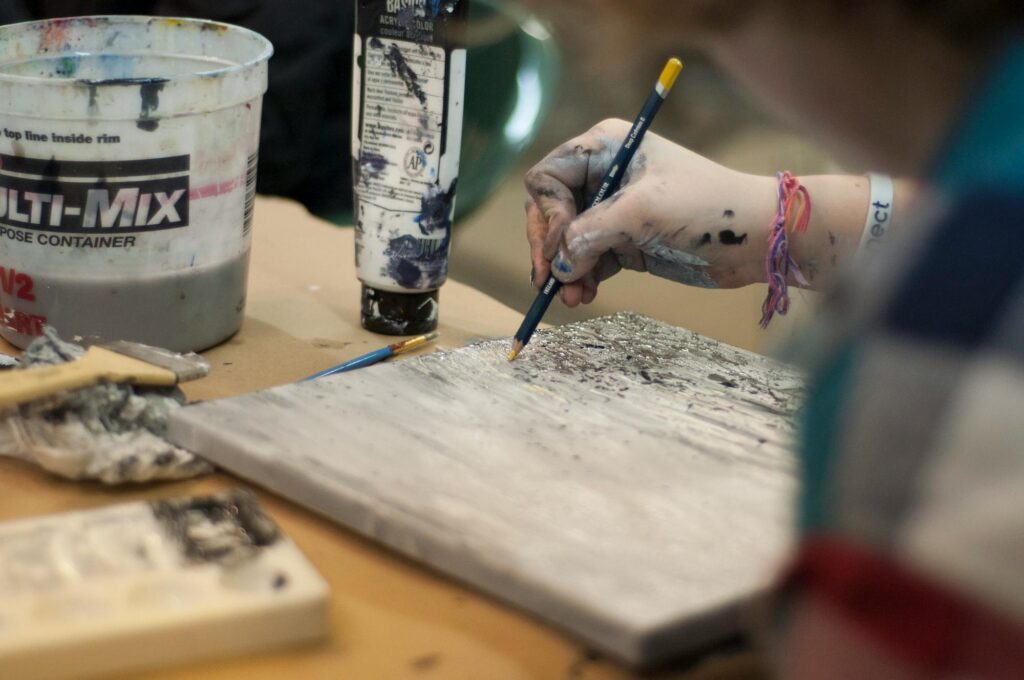
Commissions are a way for an artist to expand their income streams while keeping the focus on developing a solid body of work.
Contents
What are art commissions and how can they benefit artists
In its most simple definition, a commissioned artwork is a custom art piece created by a specific request from a client to an artist. The artist has input on the piece at different levels depending on the agreement with the artist: they can select the subject or even the style. Meanwhile, the artist provides their expertise and artistic vision to bring this request to life in a personalized piece.
For artists, working with commissioned work offers a series of different benefits:
–New stream of income: commissions provide a direct source of income, often with an upfront deposit, helping artists maintain financial consistency.
–Creative growth: working on commissions pushes artists to explore new ideas, styles, or techniques, which can lead to an expansion of their body of work and a growing portfolio.
–Expanding audience: custom pieces allow artists to build a network of potential collectors and gain visibility, leading to future commissions or referrals.

A successful commissioned work is based on an explicit agreement between both parts: the client and the artist.
Do’s of art commissions: everything you need to know
Before you start working on a commissioned work there are few things you have to make sure to do to ensure that this is a successful creative and profitable process for you as an artist, and also, to guarantee that your client is satisfied with the end result.
What to do when working with an art commission as an independent artist?
-Get specific details from the client: what do they want? When and how do they want it? Do they have any references to guide you? Are there special requirements to include about the subject or even the medium? You need all the information you can gather.
-Use email communication to ensure that all details are lined up and you have written and detailed specifications of all agreements. This will help you keep track of payments, deadlines and all exchanges between you and the client.
-Have a commission contract that clarifies the process for both parties.
-Establish a deadline for all deliverables: from first reviews to the final piece. Include in this deadline the time frame the client has to check the progress and make revisions.
-Establish a number of revisions and how far the changes can go before applying an extra fee.
-Set up a first payment of 50% to start the creation process.
-Clarify the size and format in which the final piece should be delivered. For example, if you are working with a digital piece that will go through a fine art printing process make sure to deliver it at 600 dpi and in JPEG format.
-Keep the client in the know with progress updates and drafts. If you want to protect your artwork use a watermark or showcase it in a Room Mockup giving even further change to your client to see how the piece will interact with the space.
-If you are offering framing and matting options, establish what extra fees these add-ons will imply for you art buyer.
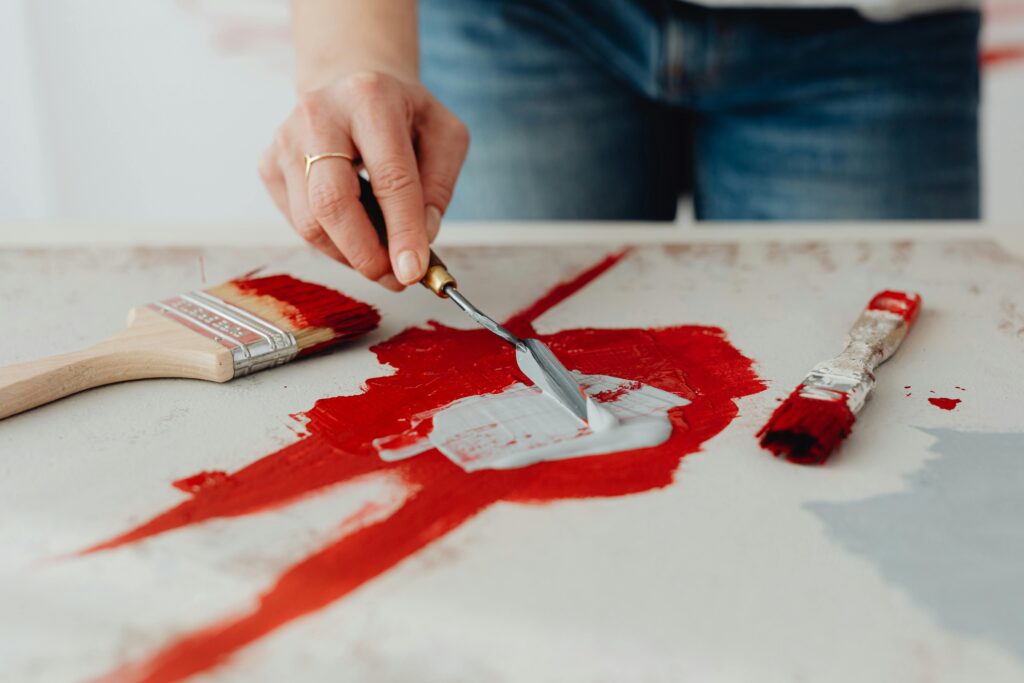
An artist can protect their work while working on a commission in several ways, from legal agreements to establishing clear limits and deadlines.
How an art commission contract should look like
If you decide to proceed with a client-commissioned artwork, you need a contract that streamlines the process and clearly outlines how both parties should proceed at each stage.
What should you include in your commissioned contract as the artist?:
–Artwork details: all requirements, including size, medium, theme, subject matter, references, and client requirements, should be specified.
–Payments and fees: clarify not only the full price of the artwork but also the deadlines for full or installment payment and the payment method. Make sure to clarify if any fees related to shipping, packaging, and even framing apply. A good practice is charging a 50% of the price to start the process.
–Revision process: establish the number of times, the extension, and the deadlines for each stage of the creation process, including reviews and revisions. Additional fees might apply if this number of revisions is exceeded.
–Copyright and ownership: as an artist, you must specify the ownership and right to reproduce the commissioned piece.
–Refund and cancellation policy: specify in which cases any of the parties can proceed with a cancellation and clearly establish a refund policy for all case scenarios. Some artists include a “killing fee” if the client cancels the commission while in the process of creation or a non-refundable down payment.
How to price your commissioned work as an artist
When pricing a commissioned artwork, you need to take a few things into account. For example, before putting numbers together, you need to consider your experience, skill level, the price of past commissions or sales, and your hourly rate.
Another significant factor is the total cost of the materials you will use to produce the piece. If the client requests the use of a certain material, you need to add this to the final price. Also, establish if the framing and matting will be charged as part of the final piece or if these are add-ons available for the client. Consider as price-changing factors the complexity of the piece, the medium, and its final size.
With all these factors in mind, you can use a basic price for commissions and work with a scalable price list according to the kind of commission: for example, you can establish a basic price rate for small, medium, and large artworks and use this as the base with add-ons according to the client’s requirements.
Don’t of art commissions: what to avoid
If you want to make working with commissions a process you can escalate as a part of your art business, there are a few “red flags” you need to pay attention to and avoid.
-Don’t start working without a down payment for the piece.
-Avoid working for the “exposure”, offer an accessible fee with different price points for clients.
-Don’t forget to establish the reproductions right of the piece.
-Don’t start working without a clear contrat that lists all deadlines, reviews, payments and additional fees.
-Don’t break the communication process, keep your client posted in the agreed stages.
-Don’t break your own agreements: if your limit was 2 revisions stick to it. Revise your contract for additional fees.
-Don’t start working on the piece without clear references and detailed requirements from the client.
-Don’t miss your own deadlines.
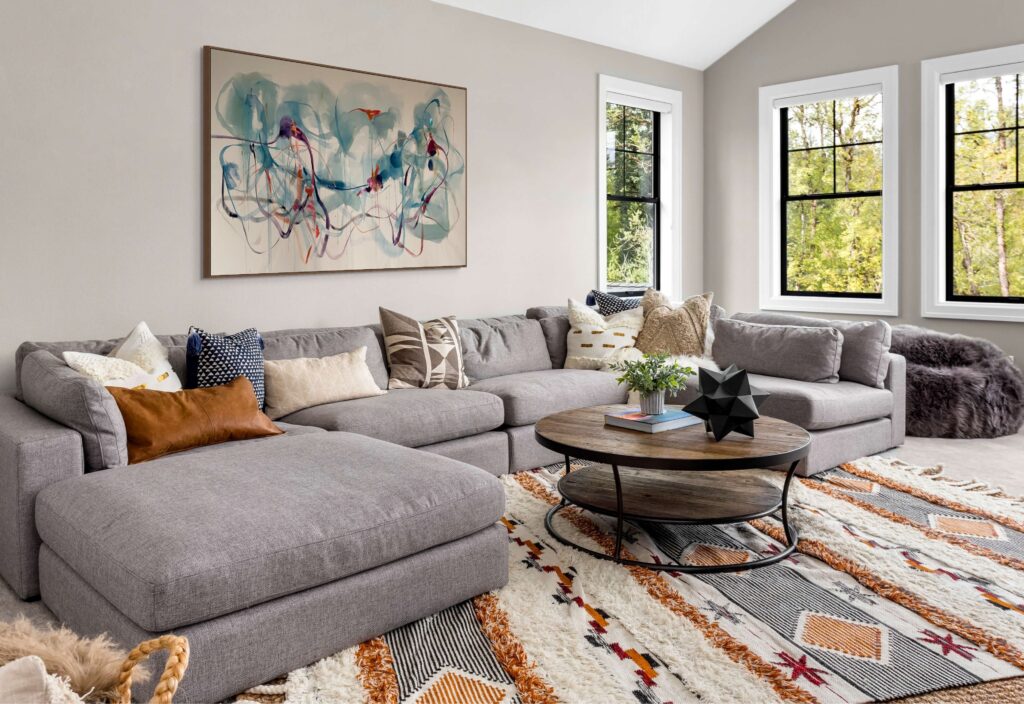
ArtPlacer’s Personal Space tool can help you guide your clients on what they want and how they want to commission a piece.
How to close the deal in an art commission: art wall mockups
Is your client unsure about which size will be best for their artwork? Do they wish they could preview how the piece will interact with the space? Personal Spaces is the art visualization tool you need to provide them with exquisite images that will help them make an informed art purchase decision. It will save you time and resources, and you will work with precisely what they want.
Here is the perfect example of when and how to use Personal Spaces to help your client decide what they want and the requirements for the piece. In the early stages of the conversation, when you are still deciding on size, medium, and framing, request a picture of the space where the client intends to hang the art.
Now, use Personal Spaces to create mockups of artwork in 3 different sizes. You can use a custom small, medium, and large size as an example. You can digitally add matting and framing to give them a better sense of how the piece will look like. Send them via email or show them in a presentation or video call to your client. This will help them solve any doubts related to questions like “what size fits best in the available space?” or “how the final piece would look like on the wall?”.
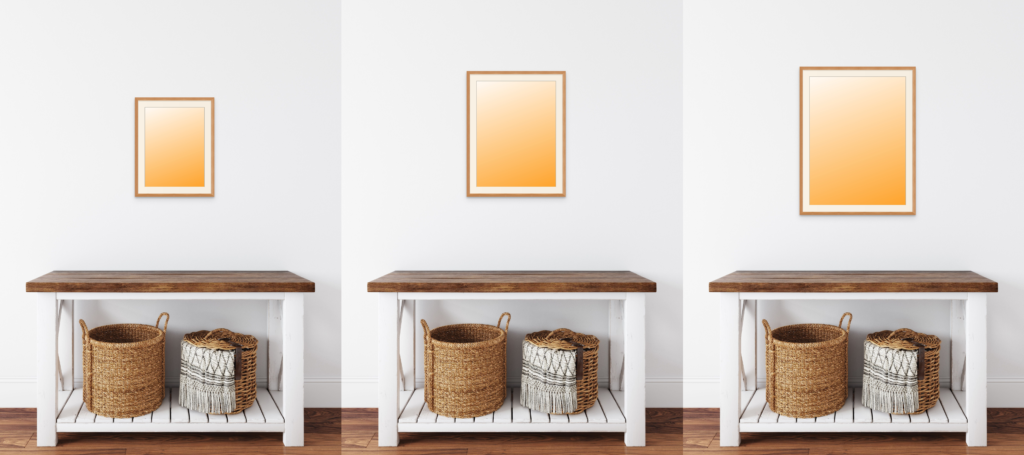
To follow this example and close the deal with the help of this art marketing feature, all you need is a picture of the space where the client wants to showcase the art. Then follow the next steps using ArtPlacer Personal Spaces:
-Click on “Artworks” and upload a plain color image of the different artwork sizes your client is considering. Usually, you will need small, medium, and large artwork.
-Select the wall space you will be working with. You can enter the wall size in inches or centimeters.
-Drag and drop your artwork. You can click on the artwork and then on “Replace” to add an artwork in a different size.
-Add a frame and mat, particularly if you are offering this add-on option.
-Adjust shadow and brightness to achieve a more realistic look.
-Download and send the mockup to your client. This way, you can give them a visual aid that will help them make an informed decision about what kind of artwork will work best in their space.
Now that you know how to navigate the world of art commissions, it’s time to work on your leads and explore new opportunities!


